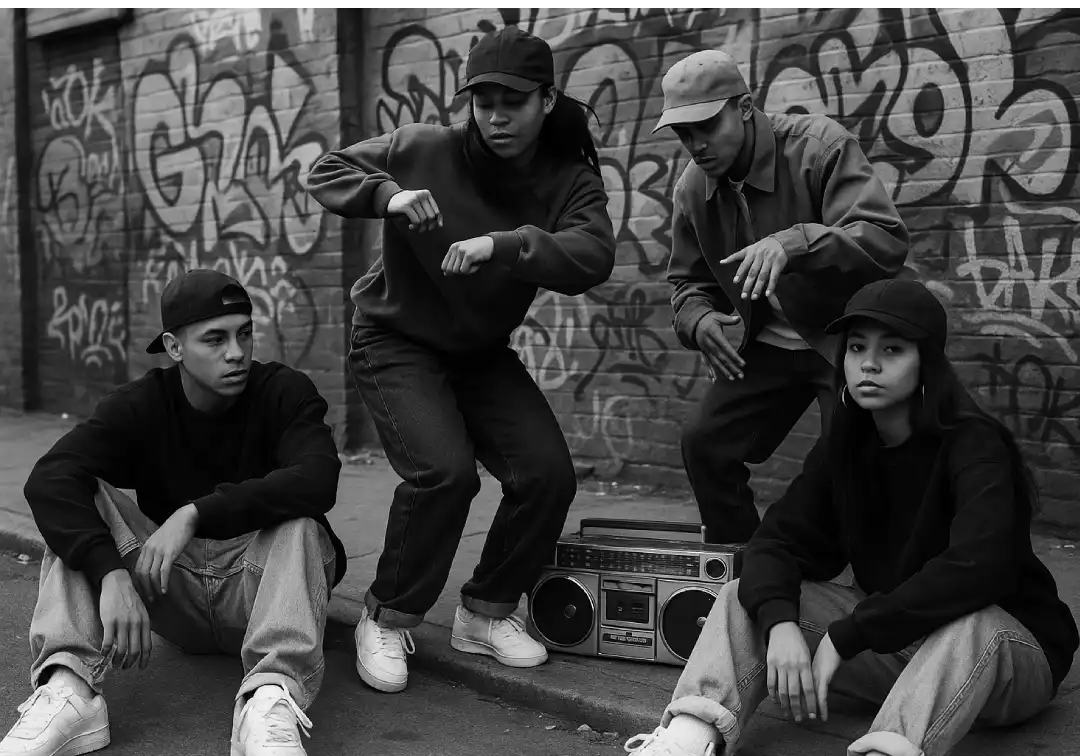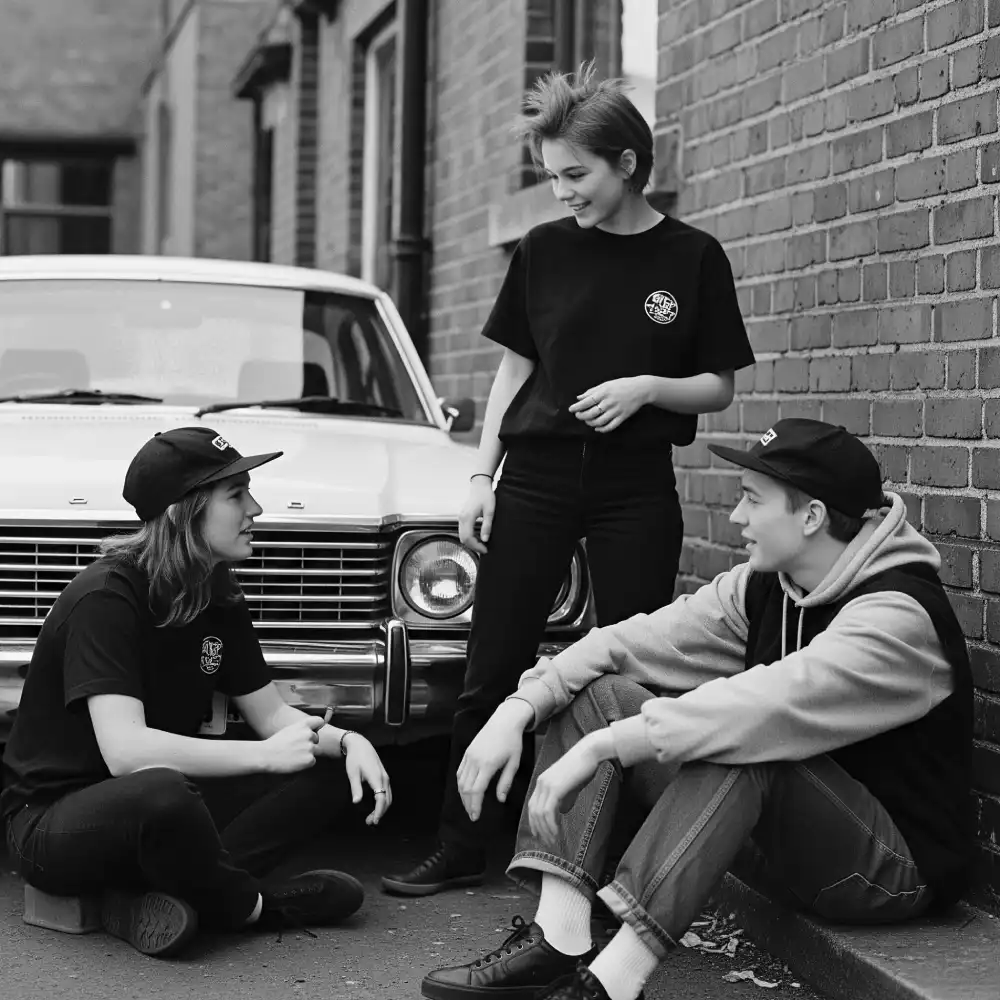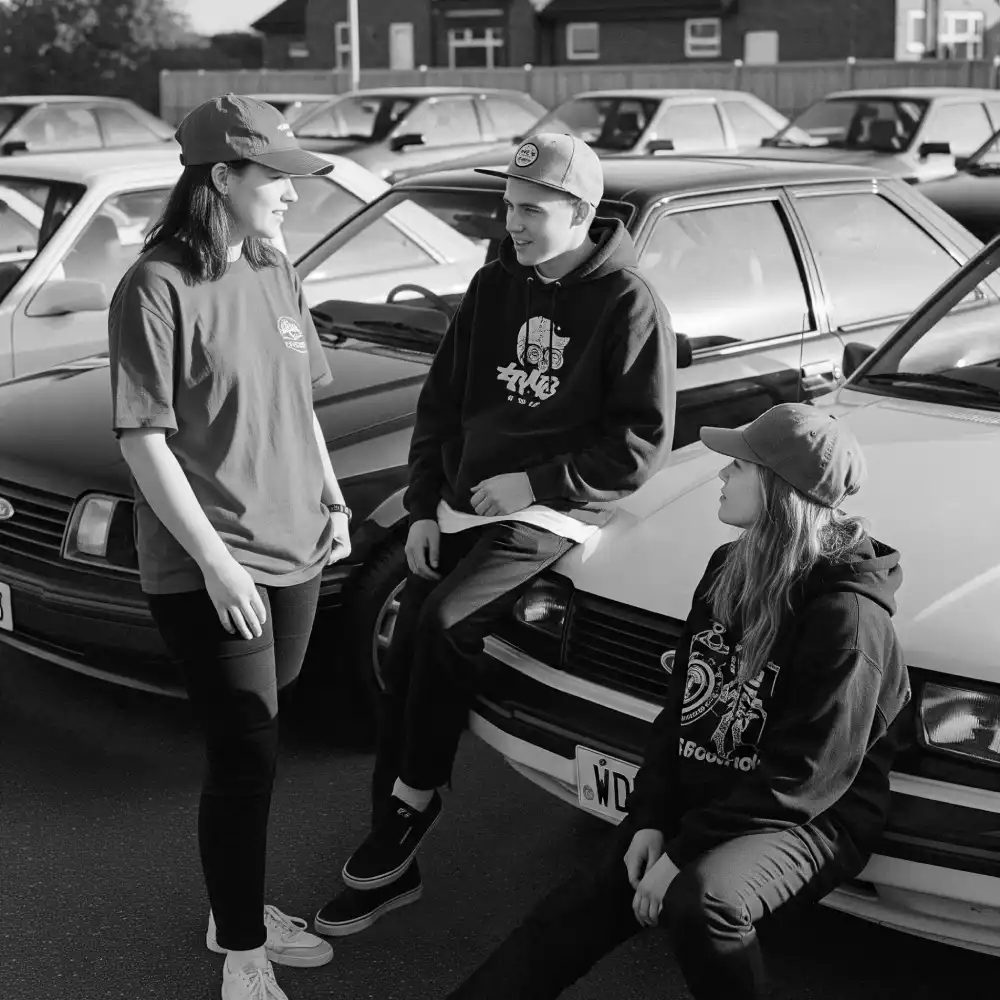
Streetwear emerged from the vibrant youth subcultures of the late 1970s and 1980s, drawing inspiration primarily from California’s surf and skate scenes and New York’s burgeoning hip-hop culture. It was a grassroots movement, a rejection of conventional fashion, born out of a DIY philosophy and a desire for comfortable, expressive clothing.
Shawn Stüssy is often credited as a pioneer. He started out as a surfboard shaper in Laguna Beach in the early 1980s and began signing his custom boards with a distinctive hand-drawn signature. He soon expanded this signature to T-shirts, hats, and shorts, initially selling them out of his car.
His brand quickly resonated beyond surf culture, fusing California casual style with elements of punk and hip-hop. During this time, the foundation was laid for how many streetwear brands operate today.

Over the years, urban fashion developed significantly:
1980s: The rise of hip-hop: In New York, hip-hop artists like Run-D.M.C. popularized well-known brands, turning tracksuits, sneakers, and bucket hats into icons. This era solidified the connection between music, street art (graffiti), and fashion.
1990s: Expansion and globalization: Many brands emerged, further consolidating the presence of urban fashion. The influence of professional sports teams was also evident, with oversized T-shirts and caps gaining popularity.

From the 2000s onwards: The fusion of mainstream and luxury: Urban fashion began to blur with haute couture. Luxury brands began incorporating streetwear elements and collaborating with streetwear brands. The rise of social media and influencers further accelerated its global reach, making it a dominant force in contemporary fashion that prioritizes comfort, individuality, and cultural expression. Typical streetwear colors, often considered versatile and expressive, include neutrals (black, white, gray, beige), earth tones (olive, terracotta, brown), and occasionally bold accents (neon, bright red).
